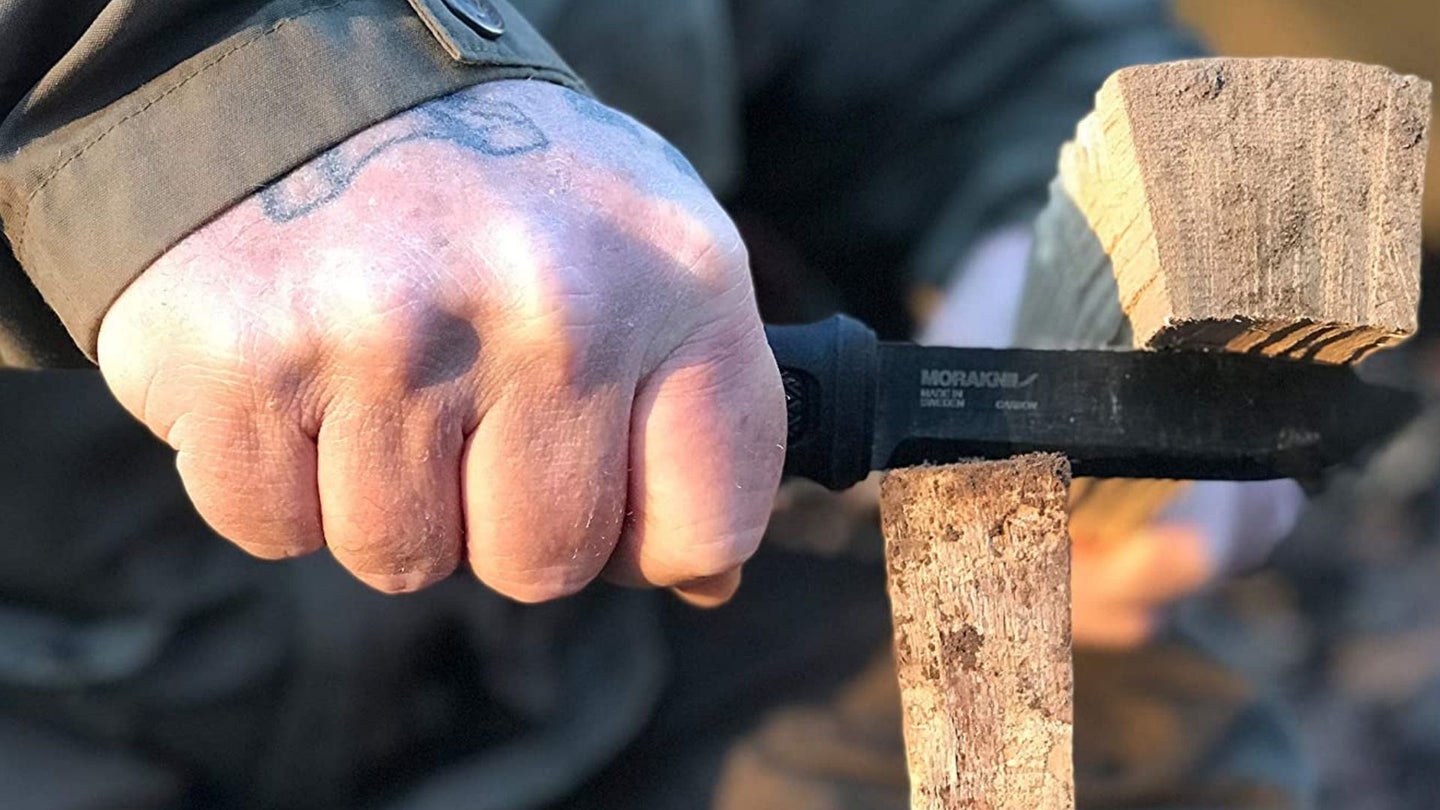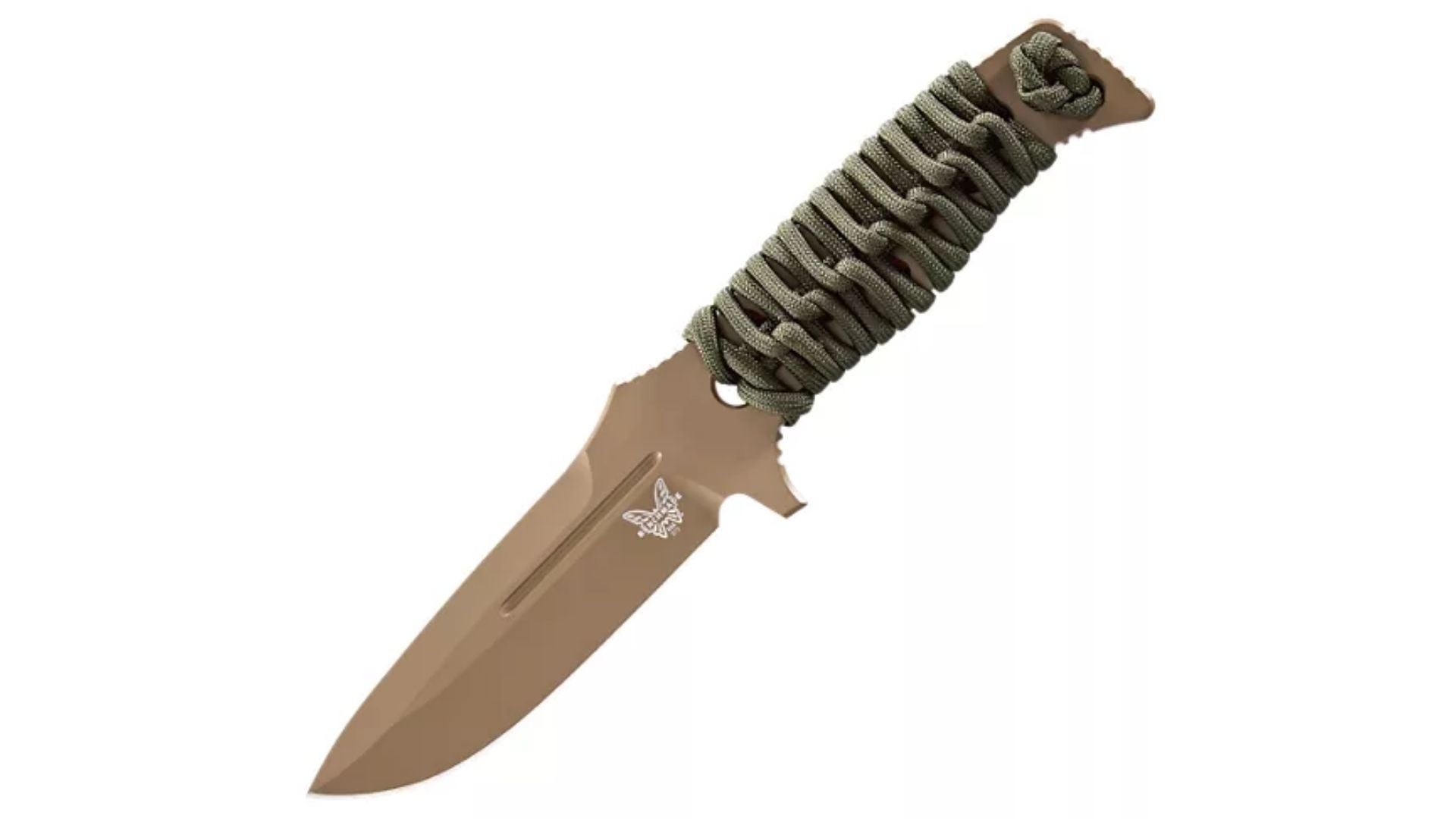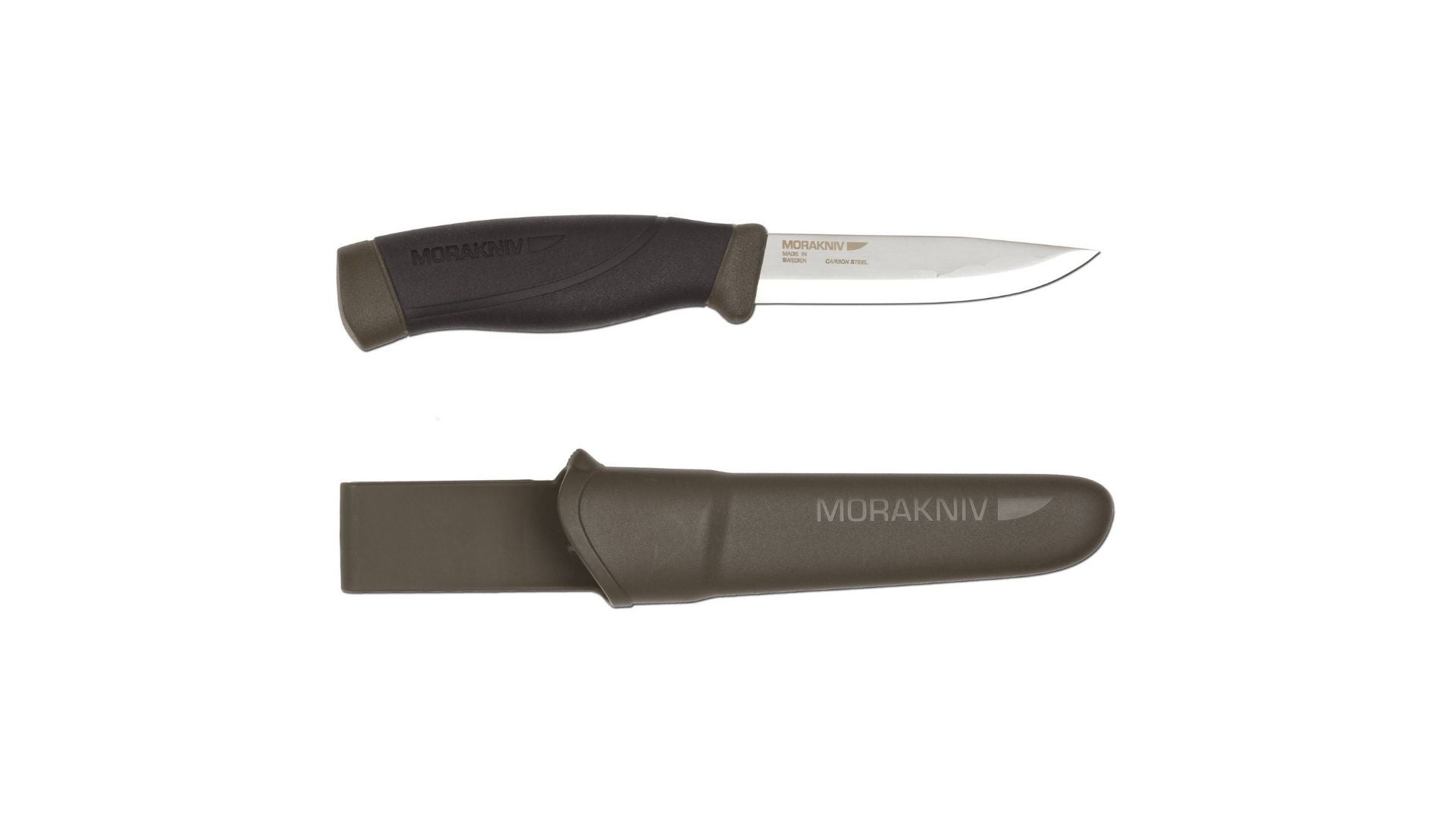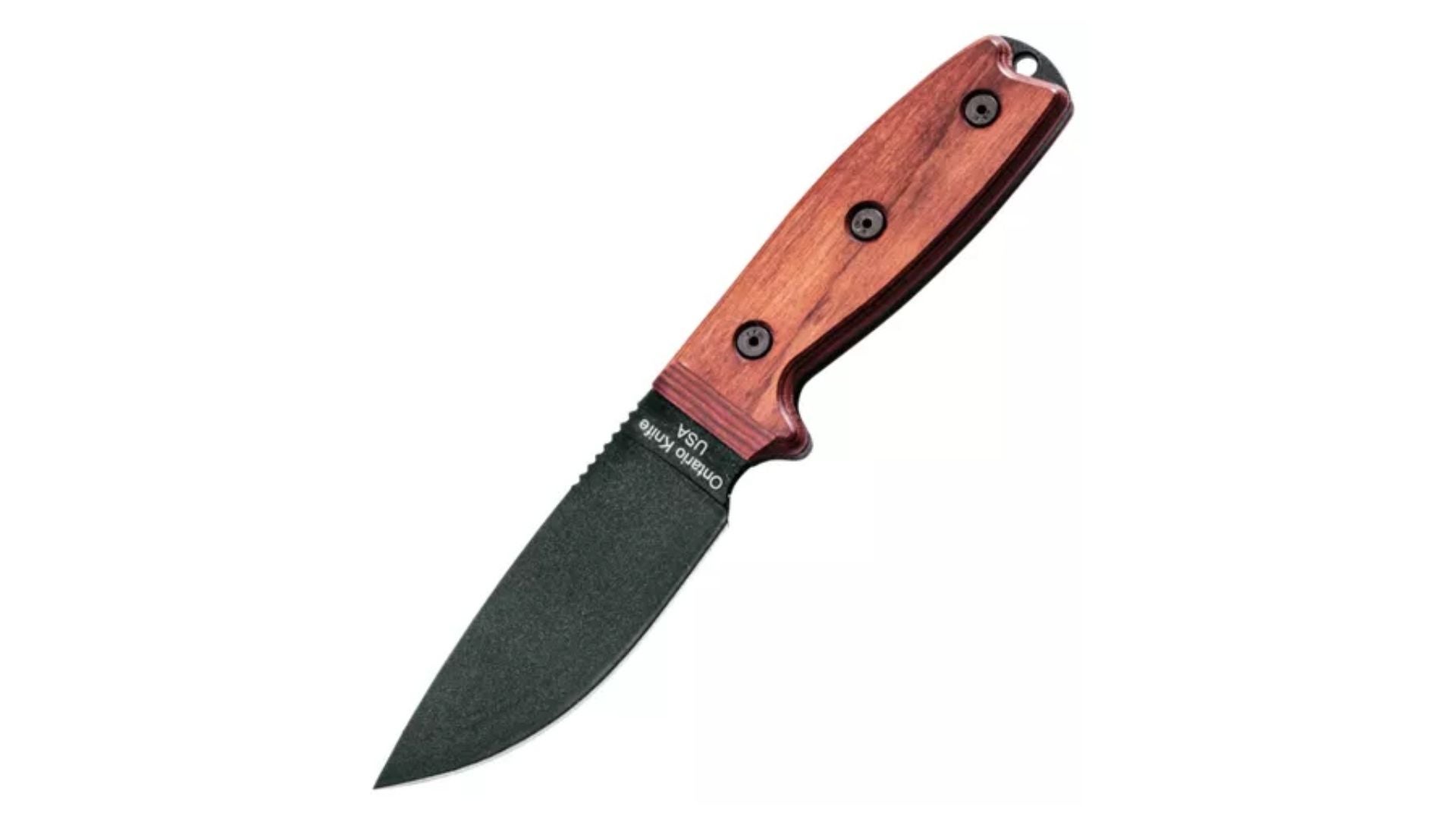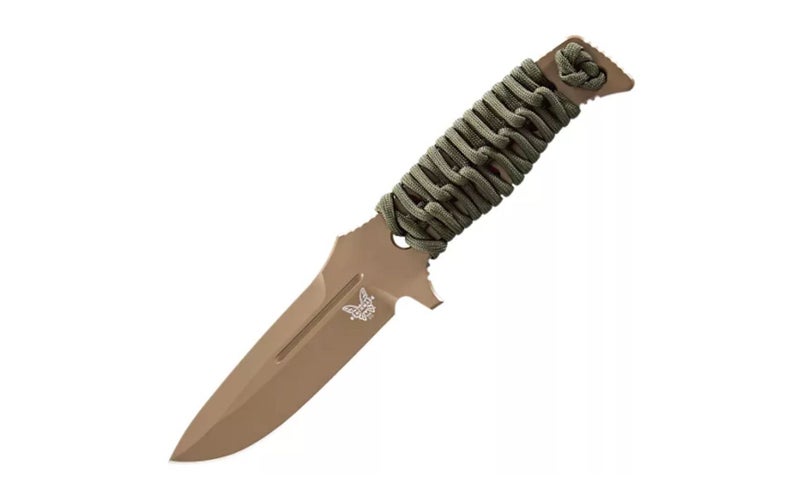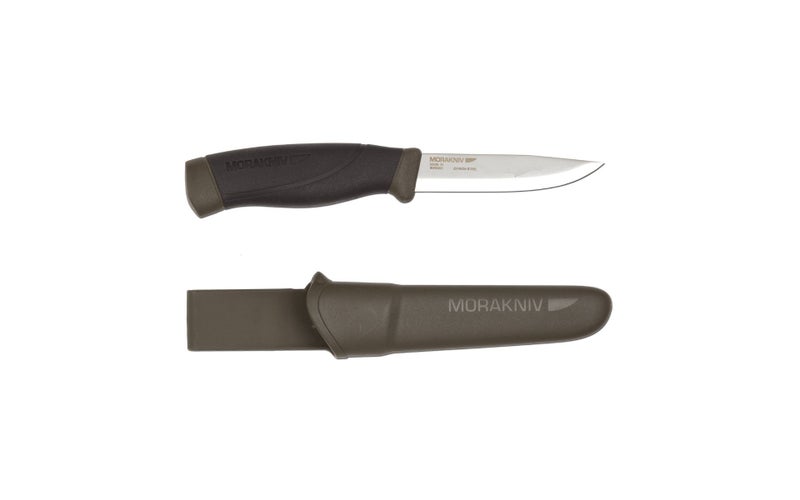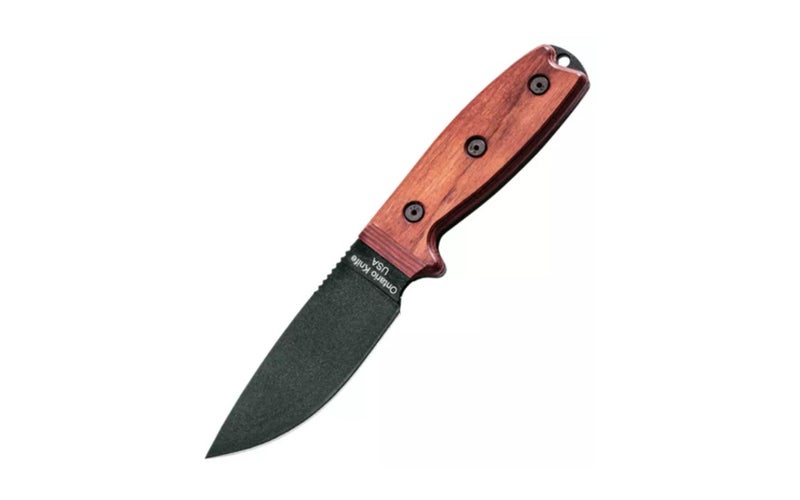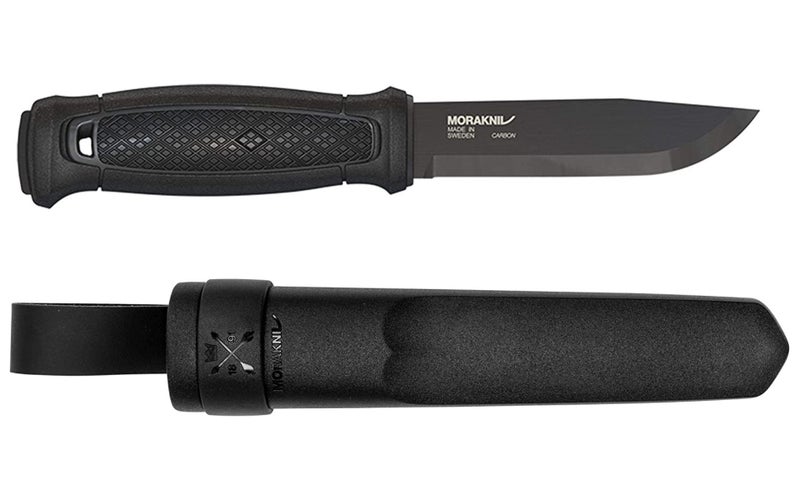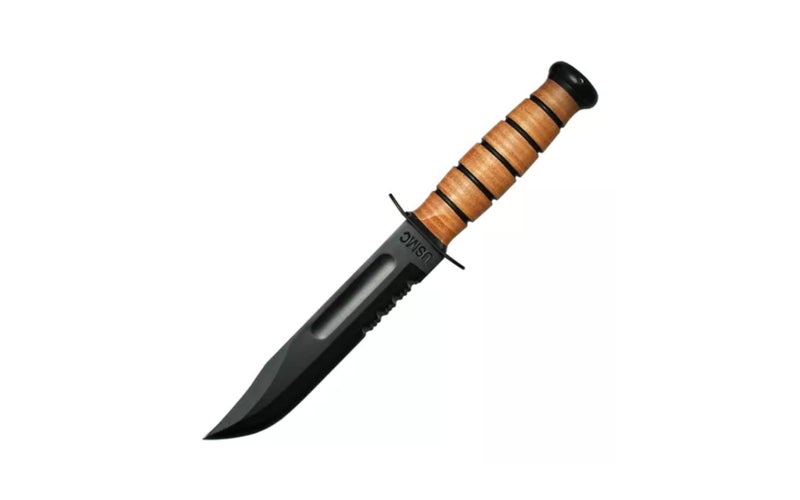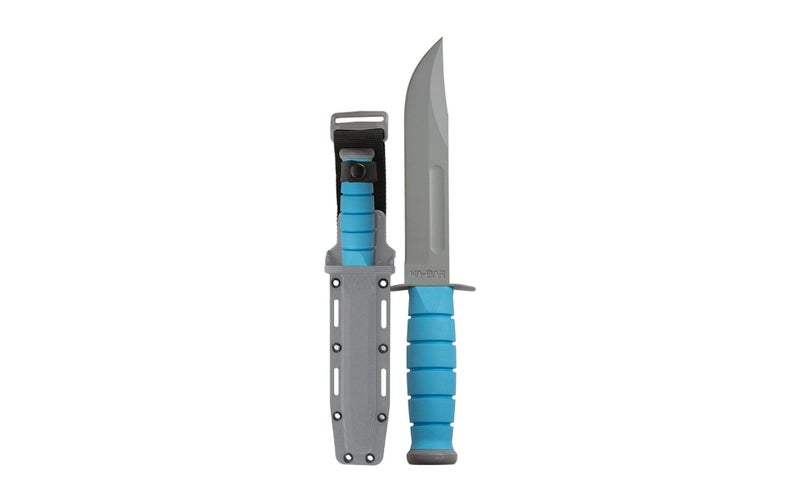We may earn revenue from the products available on this page and participate in affiliate programs.
Fixed blade knives are specialists in the knife world. I don’t typically carry one, although I own one. When I was a boot lieutenant in the Marine Corps infantry, I purchased a SOG Desert Dagger, thinking it was a marked improvement over the issued Ka-Bar in puncturing Russian-made body armor. It was well-built out of 440A stainless steel, had a cool double edge with serrations near the handle, and came with a Kydex sheath. Well folks, I never stabbed a Russian with it, and all I used it for was opening MRE boxes and slitting open plastic MRE bags. It weighed almost a pound, so I ditched it for a Spyderco Delica folding knife which served me well for many years. I did dig the SOG Desert Dagger out of retirement and took it along with me when the 1st Marine Division invaded Iraq in 2003. Again, I rarely used it, but it looked fearsome and added a bit of moral support and comfort during those very fluid days on the battlefield in March and April as we were rolling along alone and unafraid investigating “special incidents” for the division commander. Fun times.
While I prefer folding knives, fixed blade knives exist for a reason and many of our readers use them on the job, so our trusty team of Task & Purpose gear reviewers wanted to evaluate a half dozen of them and let you know what we think. Here are a handful of fixed blade knives that made the cut — and one you should avoid at all costs.
Of all the fixed blade knives we looked at, the Benchmade Fixed Adamas knife emerged as the top contender. This full tang beauty comes with a length of paracord for the handle and a locking polymer of intrinsic microporosity sheath, a blade sleeve for gripping the blade in a vise to install the paracord on the handle, and a Malice clip for attaching it to your MOLLE/PALS-equipped gear. The Adamas is made from CPM-CruWear (63-65) steel, features a drop point blade, and it’s skeletonized handle makes it light for its size. Our reviewer, Jonathon Klein, beat the heck out of this thing and torture tested it. The Adamas is very well-made, very sharp, and strong. We dig Benchmade’s LifeSharp service: They’ll sharpen your blade for life for free. Bonus! And we think it is a great value for the cost. We found the Malice clip lacking and we’d like to see Benchmade make a belt attachment for the PIM sheath that’s stronger than the clip.
Dollar for dollar, the Morakniv Companion S knife was the best of the lot. We could hardly believe it only cost $15. Our reviewer, Drew Shaprio, put this blade through its paces in the Pacific Northwest and gave this 9-inch Sweedish knife high marks. Made from Sandvik 12C27 steel, the 4.09 inch-blade is well-crafted, not some cheap, Chinese junk. The blade is super sharp from the factory and withstood a lot of abuse. The sheath is well-made, has a solid belt loop, and accepts the knife with a satisfying pop. On the downside, people with larger hands will find the handle a bit small, and the integrated guard is just a plastic bump that can be slippery at the wrong moment. If you stab something hard, there’s a chance your hand will ride the blade. It also didn’t work well with a firestarter. We recommend this value buy for folks looking for an inexpensive, and sturdy field knife.
If cost is a factor, the Ontario Knife Company RAT 3 might be your jam. The Ontario Knife Company, like KA-BAR, has been making poky, slashy, and stabby tools for the military for years, to include the Mk3 Diving Knife, the M1942 Machete, and the current USMC bayonet. The RAT 3 satisfies the three primary goals of any field knife: It has a full tang, it retains an edge well, and it is easy to maintain in the field without specialized equipment. The RAT 3’s blade length is 3.6 inches and it’s total length is 7.6 inches. It weighs 4.9 ounces and is made from 1075 carbon steel (blade) and sports a Micarta handle. We expected the factory edge to be sharper, but the 1075 steel is pretty easy to sharpen if you know what you’re doing. If you don’t, we got your back. Check out this tutorial. The blade is painted tactical black, and features a full flat taper grind. Our reviewer, Matt Sampson, took it to the field for two weeks to test it out. While he gave it high marks for its durability, ease of sharpening, versatility, and budget friendliness, he didn’t like the size of the sheath, corrosiveness of the blade, and the fact the paint chipped off the blade. His verdict: This is a good first field knife at a low price point.
The town of Mora’s been making knives for more than 400 years, and these Swedes know what they’re doing. The Morakniv Garberg is the first knife Morakniv has produced with a full tang. This one piece design makes the knife very rigid and extremely strong. It’s designed to take abuse. We found the Garberg to be a great general purpose fixed blade knife for myriad needs. It’s made from quality Sandvik 14C28N stainless steel and sports a 4.3-inch blade. It’s a bit hefty at 9.6 ounces, but durability and weight tend to go hand in hand. The blade is an efficient cutter and we dig the ergonomics of the handle. It’s also easy to sharpen and maintain. On the downside, we wish the sheath exposed more of the handle, that the blade had a bit of jimping under the thumb for better control, and that the diamond pattern on the handle was more aggressive. It’s an outstanding, simply designed knife at a good price.
No fixed blade knife review would be complete without a nod to the iconic, legendary Ka-Bar USMC Fighting Knife, which was designed for our fighting forces during WWII. Ka-Bar submitted this design to the Marine Corps on January 9, 1942, and nearly 80 years later, it’s still in production and being purchased by bajillions of boots wanting to be gungy, stressed-out adjutants who need to get to get six going-away plaques made by next Friday (Get your ass in gear, LIEUTENANT MYRICK!), and crusty old timers who want to reconnect with their devil dog DNA. The design was so successful in killing our enemies and busting open C-rats in the Pacific, jealous soldiers, sailors, and coasties adopted the knife as well. If you have an immediate need for a hand-to-hand fighting knife, this one is hard to beat. The USMC KA-BAR is designed with a 7-inch full tang blade made from nearly impossible-to-break 1095 Cro-van steel. With the leather handle, it’s 11.875 inches long. It’s heavy. It’s big. It’s intimidating. And Chesty would approve. Yut.
It’s only fitting that some cynical marketing genius at Ka-Bar created a knife for the nation’s most unnecessary and newest service: the United States Space Force, something our reviwer, Matt Sampson, covered in serious detail elsewhere. Let’s face it, a more appropriate backup piece for Space Force Guardians (my god, did I just say that out loud?) might be a soldering iron to fix connections in mainframe computers and communications equipment. KA-BAR’s 7-inch 1905 Cro-Van steel blade on this baby is uncoated, and Ka-Bar clearly doesn’t understand how uncoated metal will spontaneously fuse together in space. Ask NASA and the crew of Gemini 4 about this. They learned about spontaneous metal fusion the hard way when, following the first American space walk, they couldn’t close the capsule door, which was a significant emotional experience for the astronauts 158 miles above the Earth. Additionally, most close combat training knives are either blue or red, so having a real knife with a blue handle is just dumb for safety reasons. Oh, it’s MOLLE-compatible too, but you nerds aren’t going to the field anyway. We hate this thing. How much? In the words of the great Ellen Ripley, let’s take off and nuke this thing from orbit. It’s the only way to be sure.
Why you should trust us
The reviewers here at Task & Purpose test the products we review at home and in the field. We have years of experience living and working outdoors with the tools we recommend. We don’t get paid by the manufacturers and have editorial independence. Our editor leaves it to us to recommend products and prints what we write. All of this enables us to provide you, our valued readers, with our unvarnished, honest opinions on the recommendations we make. Learn more about our product review process.
Key features of fixed blade knives
- Full tang: The best fixed blade knives are made from a continuous piece of steel from tip to pommel.
- Sheath: Because these knives have no pivot point, like folding knives, they require a separate sheath to safely store the blade.
- Blade design and edge: There are too many different types of blade designs to cover here. Want to know the difference between a clip point, drop point, and hawkbill? Check out this excellent primer.
- Handle: This is pretty self-explanatory. The handle is the part that allows your hand to comfortably and securely manipulate the blade.
Fixed blade knives vs folding knives: which is best?
If you haven’t been following, and I hope you haven’t, there’s a debate in the knife geek world about whether fixed or folding blades are better. I don’t partake in this nonsense. Both styles are tools that have some similarities and differences in purpose. All are designed for cutting, carving, or stabbing, and they all vary widely in design, from fish fillet knives to ridiculous cosplay zombie apocalypse waste of money blades. The main difference is that folding knives have a pivot point allowing the blade to be housed in the handle which serves as a sheath. Fixed blade knives are one continuous piece of steel from top to pommel and have a separate external sheath.
Pros of folding knives
- Portability. Fully closed, folding folding knives are more compact than their fixed blade equivalents. An 8-inch knife can be folded nearly in half into a 4-inch handle which is more compact and easier to carry in a pocket.
- Concealment. Being smaller and able to fit into a pocket, folding knives are typically less visible to others.
- Safety. Because the blade is self-stored in the handle, there’s less chance that you’ll cut yourself with it.
- Convenience and staying out of jail. Folding knives are less regulated in many parts of the country, easier to conceal, and generally permitted in most municipalities. (Check your local laws. This sure as heck isn’t legal advice.)
Cons of folding knives
- Structural integrity. Because of the pivot point in folding knives, they are typically not as strong as fixed blade knives. While advancements in technology and knife design have made folding knives much stronger, the pivot is a point of potential breakage.
Pros of fixed blade knives
- Strength and structural integrity. I learned in architecture school that simpler systems are generally stronger. Fixed blade knives are made from one continuous piece of metal and have no pivot point. There is no mechanism in their design that can fail and they have less probability of breaking or snapping.
- Maintenance. Having no handle cavity sheath, fixed blades are typically easier to maintain than folding knives. (Yeah, have fun cleaning fish guts out of that folding fillet knife, buddy! So gross.)
- Tactical and survival use. Most knife fighting instructors and survival experts prefer a fixed blade over a folding blade. Fixed blades are typically faster to deploy in time competitive situations. With a folding knife, you have to take additional time to draw and deploy the blade. Also, fixed blade knives won’t break as readily as folding blade knives when striking hard structures.
Cons of fixed blade knives
- Size. A fixed blade knife is going to be twice the total length of its folding blade cousin.
- Safety. If your sheath falls off and you don’t see it, you increase the probability of getting cut.
Fixed blade knife pricing
Fixed blade knives are generally pretty affordable. You can find relatively inexpensive selections for less than $50. The better the steel and the larger the knife, the higher the price. We’ve seen premium fixed blade knives, like the Fallkniven A1 Pro, top $400.
How we chose our top picks
All of the knives recommended in this review were field-tested by your trusty crew of Task & Purpose gear reviewers. We take our time to get to know the strengths and weaknesses of each knife and also check out the reviews of other experts just to make sure we’re not missing anything.
Joe Plenzler is a Marine Corps veteran who served from 1995 to 2015. He is a backcountry expert, long-distance backpacker, rock climber, kayaker, cyclist, wannabe mountaineer, and the world’s OK-est guitar player. He supports his outdoor addiction by working as a human communication consultant, teaching at the College of Southern Maryland, and helping start-up companies with their public relations and marketing efforts.
